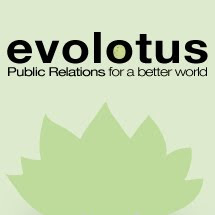The ongoing search for publicity involves legitimate mass media outlets – newspapers, magazines, websites, television, radio – as well as content generated by individuals. Individually generated content today includes bloggers, tweeters, podcasters, tumblrs, flickrs, and no doubt by the time you read this, another Next Big Web Thing.
A great deal of public-generated content is a result of news media content. Bloggers see something in the news they want to share with the world. Their analysis or commentary about what they’ve seen gives added value to their followers, and many blogs are collections of re-posted content the blogger found interesting and relevant. But without that initial media hit, there would be nothing for the blogger to analyze or curate. Of course we include influential bloggers in our PR outreach, and the lines between blog and online publication are blurrier than ever. However, this type of content-inspired-by-content is one of the more obvious hallmarks of a blog. (With rare exceptions, a media outlet does not consider coverage in another media outlet to be newsworthy.)
Social media content similarly derives from news media. People frequently share magazine articles and broadcast news clips with their social networks. In a campaign earlier this year, one article about our client was shared more than 1,200 times on Facebook alone. Rather than posting the client’s website with the comment “check out this great org,” people posted and reposted the link to the article itself. PR generated the article; individuals shared it with others on their social sites.
My war with the internets comes from the confusion these content trails can create. When a donor tells my client they heard about the organization “on Facebook” or “on the internet,” there’s no way of tracking what they may have seen and whether it came from PR efforts. It’s possible my client hears “on Facebook” and wonders whether their promotional dollars would be better spent on social media instead of a hardworking public relations agency. “I read about you on a blog” doesn’t say much either, and might cause a client to consider hiring a marketing intern to post spammy comments on blogs.
But if someone says “I heard about what you do on a blog that linked to a Time Magazine article,” or “my Facebook friend posted a story from her local TV news in Florida,” the content trail is identified.
There’s a mistaken belief that social and viral media success come from grassroots publicity, a small-d democratic internet. On the contrary, there’s a good chance that grassroots effort isn’t real grass, it’s astroturf that is a result of strategic PR.


No comments:
Post a Comment
Note: Only a member of this blog may post a comment.